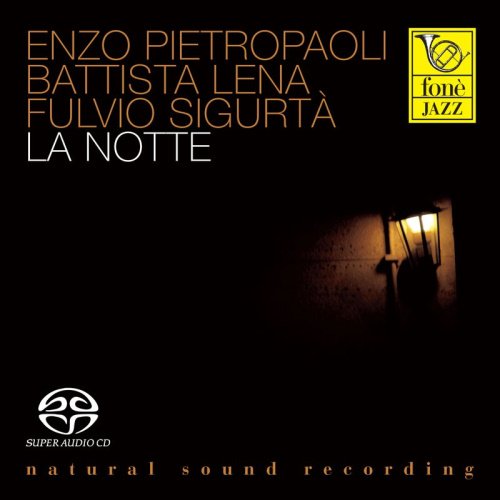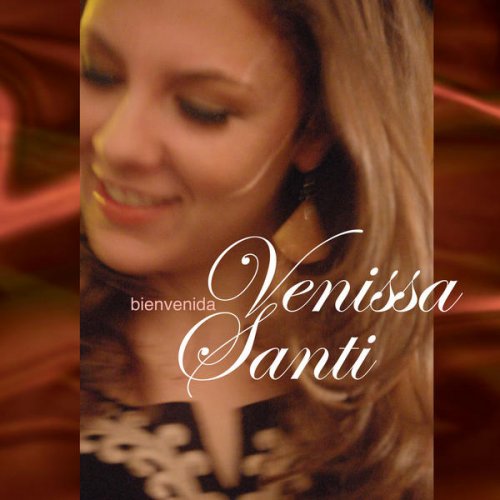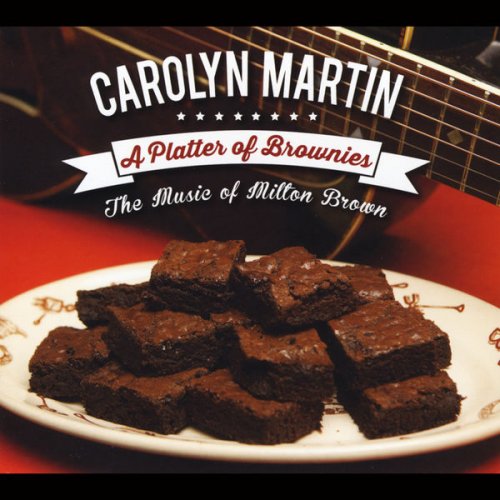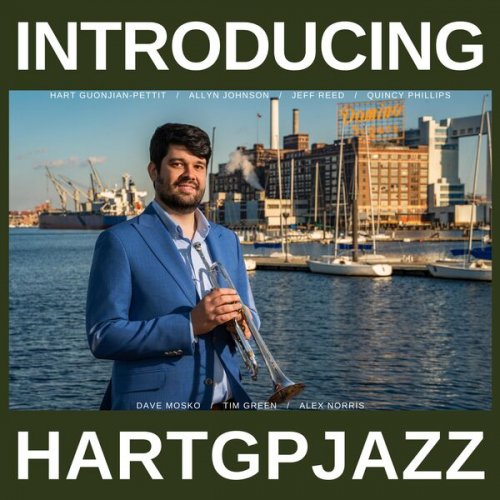Enzo Pietropaoli, Battista Lena, Fulvio Sigurta - La Notte (2012) [SACD]

Artist: Enzo Pietropaoli, Battista Lena, Fulvio Sigurta
Title: La Notte
Year Of Release: 2012
Label: Fonè Records
Genre: Contemporary Jazz
Quality: DSD64 image (*.iso) / 2.0 (2,8 MHz/1 Bit)
Total Time: 00:58:31
Total Size: 934 MB
WebSite: Album Preview
Tracklist:Title: La Notte
Year Of Release: 2012
Label: Fonè Records
Genre: Contemporary Jazz
Quality: DSD64 image (*.iso) / 2.0 (2,8 MHz/1 Bit)
Total Time: 00:58:31
Total Size: 934 MB
WebSite: Album Preview
01. La notte
02. Tre voci
03. Follow the heron
04. Agostino
05. L'ombra della sera
06. El vuelo de lobato
07. Peach trees
08. Turn out the stars
09. Canzone per chiamarti
10. Polecra's spring
11. Il cuore e l'azzurro
12. All through the night
La Notte, a jazz trio session of trumpet (and fluegelhorn), guitar and acoustic bass recorded in 2012, shares its title with one of the most influential films of 20th-century Italian cinema, Antonioni's "La Notte" (1961) and with that film's landmark soundtrack album of jazz music.
The evolution of European jazz styles over the course of a half-century separates the two albums stylistically. What ties them is the presence of jazz music—and jazz musicians—in Italian films, a cross-cultural encounter which engendered a 'cinematic mode' of Italian jazz.
The sedate Italian music scene of the late 1950s was enlivened by the presence of a notorious American jazz star. Trumpeter Chet Baker first toured Italy in 1958, then returned in 1959 for what became a much longer residency than he could have imagined. Baker's insatiable heroin addiction was no secret to Italian jazz fans; it was part of his allure. His arrest, trial and incarceration for drug possession vividly inscribed him in the consciousness of his fans as a countercultural martyr. That Chet Baker had appeared both as an actor and on the soundtracks of several popular films only reinforced his impact on the developing Italian jazz and popular music culture.
At that same time, Giorgio Gaslini, a conservatory-educated composer and pianist, was invited to perform his modernist-styled hard bop on the set of Michelangelo Antonioni's "La Notte." As the film won an international audience, art-house moviegoers saw and heard Italian jazz in a new context. The jazz soundtrack, which was released on LP to critical acclaim, spoke to a generation of educated young people who were disenchanted with the shallowness of materialistic culture. The LP prepared a listenership for Gaslini's innovative fusion of 12-tone classical music and jazz instrumentation. Over a long career, Gaslini composed for orchestras and chamber ensembles, and recorded solo piano transcriptions of the works of American jazz innovators Thelonious Monk, Sun Ra and Albert Ayler.
In subsequent decades, musicians Enrico Rava, Enrico Pieranunzi, Stefano Bollani, Gianluigi Trovesi and Paolo Fresu developed audiences outside of Italy in part through collaboration with American, British and Scandinavian players. Pieranunzi and Trovesi draw on Italian historical sources and play a distinctly regional style of music, but ECM recording artists Bollani and Rava hold to a more mainstream jazz conception. The rewards of playing in an internationally-recognized musical idiom can be measured in CD revenues and concert ticket sales; for many lesser-known Italian players, the outlets for their artistic production are small record labels and regional music festivals—and film soundtracks.
LA NOTTE 2012
Of the eight original compositions by band members, three were written by guitarist Battista Lena: the title track "La Notte", "Agostino", and "L'Ombra della Sera". Lena is an accomplished composer of film scores, with 14 movie credits to his name. He has also performed and recorded with fellow Italian jazz players Enrico Rava and Roberto Gatto, and significantly, on Enzo Pietropaoli's 1998 release Stolen Songs, a set of jazz interpretations of pop, rock and punk songs across a spectrum of styles from Blind Faith to Burt Bacharach to the Sex Pistols. These two modes, cinema and popular song, inform his composing style: evocative, moody, compact in form.
"La Notte" sets the tone of the entire set, with its languorous tempo and insinuating melody. Trumpeter Fulvio Sigurtà weaves a mournful line, intimate and darkly-hued, against a spare arrangement of bass and classical guitar. "Agostino" opens with an elegiac trumpet/guitar melody that suspends on a dramatic pause. An unaccompanied bass solo ensues, and at its conclusion, the trumpet and guitar restate the opening theme.
Bassist Pietropaoli's original contributions draw on the folk melodic style that he explored on Enzo Pietropaoli Quartet: YATRA Vol. 3. In his moody "El Vuelo de Lobato", a lengthy chord progression in waltz time provides the framework for Sigurtà's probing fluegelhorn (credited as flicorno) solo. The 'three voices' ("Tre Voci") of the players are set in careful balance: muted trumpet, softly-plucked guitar chords and spare bass notes. Here, and throughout the record, Sigurtà plays with delicacy and economy, emphasizing the vocal qualities of his trumpet in a way that echoes Chet Baker's languid style.
The Bill Evans jazz standard "Turn out the Stars" offers all three players a solid foundation for (identifiably) jazz soloing. The set concludes, aptly, with the Cole Porter song "All Through the Night". The trio takes the tune at mid-tempo, driven by Pietropaoli's propulsive bass playing.
La Notte was engineered, recorded and mastered by Fonè Records label owner Giulio Cesare Ricci with his classic Neumann microphone kit direct to DSD. The historic site of the Teatro Persio Flacco provides a warm ambience. Signor Ricci's careful placement of microphones generates an astonishingly realistic stereo soundstage. On some of the tunes, guitarist Lena vocalizes very softly (and in tune). The first time I played the recording fairly loud, I thought one of my neighbors was singing along…
Unlike the doomed couple locked in a perpetual loveless embrace at the end Antonioni's film, the three protagonists of this 'Notte' will walk home when the night is over.
The evolution of European jazz styles over the course of a half-century separates the two albums stylistically. What ties them is the presence of jazz music—and jazz musicians—in Italian films, a cross-cultural encounter which engendered a 'cinematic mode' of Italian jazz.
The sedate Italian music scene of the late 1950s was enlivened by the presence of a notorious American jazz star. Trumpeter Chet Baker first toured Italy in 1958, then returned in 1959 for what became a much longer residency than he could have imagined. Baker's insatiable heroin addiction was no secret to Italian jazz fans; it was part of his allure. His arrest, trial and incarceration for drug possession vividly inscribed him in the consciousness of his fans as a countercultural martyr. That Chet Baker had appeared both as an actor and on the soundtracks of several popular films only reinforced his impact on the developing Italian jazz and popular music culture.
At that same time, Giorgio Gaslini, a conservatory-educated composer and pianist, was invited to perform his modernist-styled hard bop on the set of Michelangelo Antonioni's "La Notte." As the film won an international audience, art-house moviegoers saw and heard Italian jazz in a new context. The jazz soundtrack, which was released on LP to critical acclaim, spoke to a generation of educated young people who were disenchanted with the shallowness of materialistic culture. The LP prepared a listenership for Gaslini's innovative fusion of 12-tone classical music and jazz instrumentation. Over a long career, Gaslini composed for orchestras and chamber ensembles, and recorded solo piano transcriptions of the works of American jazz innovators Thelonious Monk, Sun Ra and Albert Ayler.
In subsequent decades, musicians Enrico Rava, Enrico Pieranunzi, Stefano Bollani, Gianluigi Trovesi and Paolo Fresu developed audiences outside of Italy in part through collaboration with American, British and Scandinavian players. Pieranunzi and Trovesi draw on Italian historical sources and play a distinctly regional style of music, but ECM recording artists Bollani and Rava hold to a more mainstream jazz conception. The rewards of playing in an internationally-recognized musical idiom can be measured in CD revenues and concert ticket sales; for many lesser-known Italian players, the outlets for their artistic production are small record labels and regional music festivals—and film soundtracks.
LA NOTTE 2012
Of the eight original compositions by band members, three were written by guitarist Battista Lena: the title track "La Notte", "Agostino", and "L'Ombra della Sera". Lena is an accomplished composer of film scores, with 14 movie credits to his name. He has also performed and recorded with fellow Italian jazz players Enrico Rava and Roberto Gatto, and significantly, on Enzo Pietropaoli's 1998 release Stolen Songs, a set of jazz interpretations of pop, rock and punk songs across a spectrum of styles from Blind Faith to Burt Bacharach to the Sex Pistols. These two modes, cinema and popular song, inform his composing style: evocative, moody, compact in form.
"La Notte" sets the tone of the entire set, with its languorous tempo and insinuating melody. Trumpeter Fulvio Sigurtà weaves a mournful line, intimate and darkly-hued, against a spare arrangement of bass and classical guitar. "Agostino" opens with an elegiac trumpet/guitar melody that suspends on a dramatic pause. An unaccompanied bass solo ensues, and at its conclusion, the trumpet and guitar restate the opening theme.
Bassist Pietropaoli's original contributions draw on the folk melodic style that he explored on Enzo Pietropaoli Quartet: YATRA Vol. 3. In his moody "El Vuelo de Lobato", a lengthy chord progression in waltz time provides the framework for Sigurtà's probing fluegelhorn (credited as flicorno) solo. The 'three voices' ("Tre Voci") of the players are set in careful balance: muted trumpet, softly-plucked guitar chords and spare bass notes. Here, and throughout the record, Sigurtà plays with delicacy and economy, emphasizing the vocal qualities of his trumpet in a way that echoes Chet Baker's languid style.
The Bill Evans jazz standard "Turn out the Stars" offers all three players a solid foundation for (identifiably) jazz soloing. The set concludes, aptly, with the Cole Porter song "All Through the Night". The trio takes the tune at mid-tempo, driven by Pietropaoli's propulsive bass playing.
La Notte was engineered, recorded and mastered by Fonè Records label owner Giulio Cesare Ricci with his classic Neumann microphone kit direct to DSD. The historic site of the Teatro Persio Flacco provides a warm ambience. Signor Ricci's careful placement of microphones generates an astonishingly realistic stereo soundstage. On some of the tunes, guitarist Lena vocalizes very softly (and in tune). The first time I played the recording fairly loud, I thought one of my neighbors was singing along…
Unlike the doomed couple locked in a perpetual loveless embrace at the end Antonioni's film, the three protagonists of this 'Notte' will walk home when the night is over.




![Machito and His Orchestra - Irving Berlin in Latin America (Remastered Edition 2025) [Hi-Res] Machito and His Orchestra - Irving Berlin in Latin America (Remastered Edition 2025) [Hi-Res]](https://www.dibpic.com/uploads/posts/2025-12/1765784965_moib.jpg)

![Stefan Lovin - Heaven Shines Like Silver (2025) [Hi-Res] Stefan Lovin - Heaven Shines Like Silver (2025) [Hi-Res]](https://img.israbox.com/img/2025-12/12/iof4nx75kf3sa1i0vq1k07kqg.jpg)
![Tim Kliphuis, Maya Fridman, Marc van Roon - Kosmos (2025) [Hi-Res] Tim Kliphuis, Maya Fridman, Marc van Roon - Kosmos (2025) [Hi-Res]](https://www.dibpic.com/uploads/posts/2025-12/1765893448_folder.jpg)
